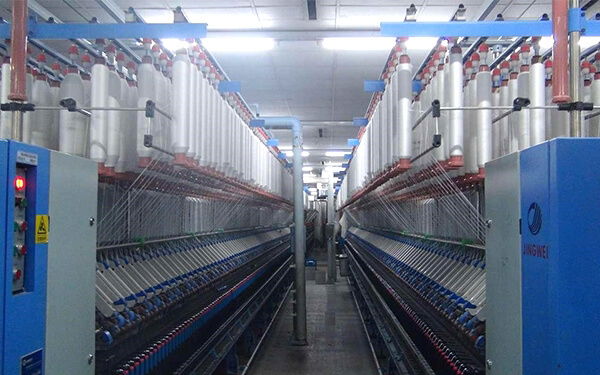Veichi AC310 Series VFD Application Story
Project Overview
Site: Textile Factory
Date: December 2021
Location: Pakistan
Industry: Textile
Project Scope: High-performance vector control inverters used in spinning frame
VEICHI Deliveries: AC310 series VFD

Project Overview
The spinning machine plays a crucial role in transforming semi-finished roving or sliver into spun yarn by drawing, twisting, and winding. It is the core machine in spinning operations, and the quantity and quality of spun yarn produced directly reflect the effectiveness of the spinning process.
The spindle, the key production unit of the spinning machine, is used to measure production in kilograms per thousand spindles per hour. The scale of a spinning factory is generally measured by the total number of spindles. However, issues such as yarn breakage often occur during operation, which is measured as the number of broken ends per thousand spindles per hour. These factors impact labor productivity, equipment performance, spinning quality, and the dust content in the workshop. Notably, the spinning machine is one of the most energy-consuming components in spinning production. As a roll of yarn is completed, production halts, and a new roll is required to continue. The size of the roll significantly influences labor productivity, equipment efficiency, and energy consumption.
The relationship between spindle speed, roll size, and breakage rate is interdependent, and these factors serve as an indicator of the technical level of the spinning process. Evaluating these elements from social, technological, and economic perspectives ensures an optimal balance.
Process Requirements
Spinning represents the final stage of yarn production, and the breakage rate during spinning has a critical impact on product quality, output, and energy consumption. The primary cause of yarn breakage is when the strength of the yarn between the roller and guide hook becomes weaker than the spinning tension, leading to instability. Therefore, maintaining steady spinning tension is vital to reducing the breakage rate.
High-speed winding in spinning forms balloons, and the fluctuation of these balloons at various spinning stages directly impacts the spinning tension, which in turn influences the breakage rate. Understanding the behavior of tension changes during the doffing process is essential for maintaining consistent tension and minimizing breakages.
Key factors in spinning include:
- Spindle Speed and Spinning Tension: Spinning tension increases as spindle speed rises, with a more significant increase in tension at higher spindle speeds.
- Tension Changes During Doffing: At the start of spinning, yarn tension reaches its peak due to the largest balloon size and smallest winding diameter. As the steel plate rises, tension decreases. However, tension becomes most unstable just before and after the formation of the pipe bottom. Once the pipe bottom is formed, changes in the winding diameter dominate yarn tension. When the steel plate is at a lower position (larger diameter), tension is lower, and the balloon is larger. The most stable tension occurs in the middle stage of yarn formation. As the winding height increases, the balloon size flattens, and tension instability may result in breakage and twisting irregularities.
Solution with VEICHI Products
Upon installing VEICHI’s AC310 series VFD, the following adjustments were made to optimize spinning performance:
- For small and large yarn spinning, spindle speed was reduced by 5% to 8% to decrease the breakage rate.
- For medium yarns, spindle speed was increased by 5% to 15% based on on-site conditions.
Given that medium yarns constitute approximately 80% of the total yarn produced, the overall spinning speed was increased by nearly 10%. This resulted in a significant boost in spindle operation time and an improvement in spinning efficiency, leading to a production increase of nearly 10%.
Conclusion
The integration of VEICHI’s AC310 series VFD into the spinning system resulted in a more stable and reliable operation, enhancing economic benefits for the client. Following successful on-site tests, the VEICHI solution received high praise for its performance. Key benefits include:
- Increased production volume
- Improved yarn quality and reduced breakage rate
- Reduced material and energy consumption
- Enhanced production efficiency
- Extended machine lifespan
- Reduced maintenance workload
This comprehensive solution has successfully optimised the spinning process, contributing to both operational efficiency and profitability.